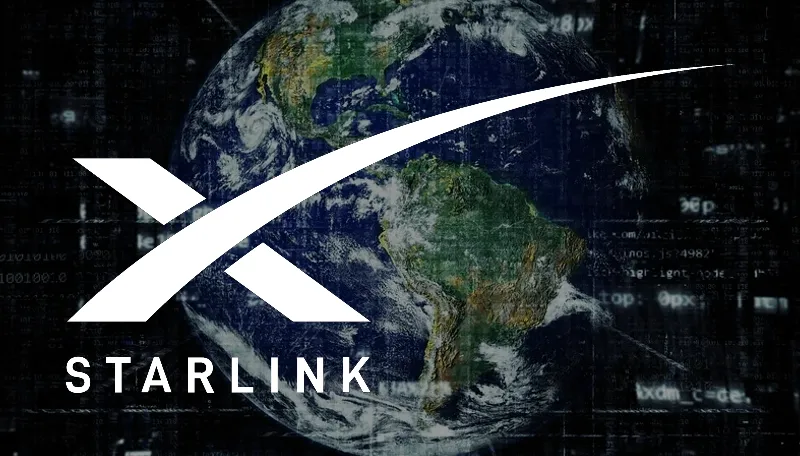Africa’s digital future hinges on the evolving dynamic of Starlink vs telecoms in Africa. Starlink, Elon Musk’s satellite internet service, has applied for a license in Uganda but faces delays, with availability now pushed to 2025 due to regulatory hurdles. Meanwhile, Starlink operates in 21 African countries, including Nigeria, Kenya, and Ghana, offering speeds up to 200 Mbps. This challenges telecom giants like Safaricom, MTN, and Airtel, who dominate with ground networks. Yet, this rivalry could create a win-win situation, fostering collaboration to connect millions across urban and rural areas.
Only 36% of Sub-Saharan Africans are online, per the International Telecommunication Union (ITU), leaving regions like rural Uganda disconnected. The Starlink vs telecoms in Africa dynamic, if harnessed, could bridge this gap. This article explores Starlink’s potential, telecoms’ response, sectoral impacts, regulatory challenges, and the collaborative path forward in 2025.
Starlink’s Growing Footprint in Africa
Starlink’s low-earth-orbit satellites promise high-speed internet to remote areas, but Uganda awaits its launch pending approval from the Uganda Communications Commission (UCC).
Rapid Expansion Elsewhere
Starlink’s competitive pricing—$28-$34/month in Kenya and Ghana—has driven adoption, with 65,500 subscribers in Nigeria by Q3 2024, ranking it second among ISPs, per Rest of World. Kenya had 8,000 users by June 2024, while Ghana and Rwanda see growing demand. In Uganda, some users access Starlink via roaming from Kenya, paying ~UGX403,000/month, but official services await licensing.
Learn about satellite internet trends .
Infrastructure Plans
Starlink is investing $250M in African ground stations by 2030, with facilities in Nigeria and Kenya. Once approved in Uganda, similar stations could reduce latency by 50%, boosting e-commerce and telehealth. These complement telecoms’ fiber networks, enabling hybrid connectivity.
Explore internet infrastructure
Telecoms’ Robust Response
African telecoms, employing over 150,000 people, face Starlink’s potential disruption but are innovating to stay competitive.
Cutting-Edge Upgrades
Safaricom boosted 5G speeds by 40% and cut rural data prices by 30% in 2024, holding a 36.4% Kenyan market share. MTN Uganda’s AI-driven chatbots slashed customer query times by 65%. Airtel’s $1.8B fiber rollout in 2025 targets urban centers, complementing Starlink’s rural potential.
Economic Contributions
Telecoms are economic pillars. Safaricom employs 8,000 Kenyans and paid $500M in taxes in 2024, while MTN Uganda supports 3,500 jobs. Starlink’s global workforce of ~2,500 raises fairness concerns, as telecoms push for local partnerships.
Discover telecom innovations (/blog/telecom-advancements).
Transforming Key Sectors
The Starlink vs telecoms in Africa dynamic could revolutionize industries, with Uganda poised to benefit once Starlink launches.
Education
Starlink powers e-learning in Kenya, with Kolibri reaching 700,000 students. In Uganda, approval could connect 2,000 rural schools by 2028, per government plans. Safaricom’s zero-rated platforms via 5G serve urban learners, creating a hybrid model to address the 75% of African students offline, per UNESCO.
Agriculture
Starlink enables AI tools like FarmBetter in Ghana, boosting yields by 35%. Airtel’s IoT sensors in Nigeria monitor soil health, supporting 60% of Africa’s agricultural workforce. Uganda’s farmers could gain similar market access post-launch.
Healthcare
Starlink supports Rwanda’s telemedicine, with Zipline’s drones serving 200,000 patients. MTN’s HealthConnect via 5G aids Nigerian clinics. In Uganda, Starlink could reduce maternal mortality by 25% in rural areas, as seen elsewhere since 2023.
See how connectivity transforms sectors
Regulatory Hurdles
The regulatory landscape, aligned with the African Union’s Digital Transformation Strategy, complicates Starlink’s rollout.
Uganda’s Licensing Delays
Starlink applied for a UCC license, but approval is delayed to 2025 due to regulatory complexities, including local partnership requirements. Uganda’s plan to cut internet costs by up to 50% by 2025 relies on fiber, but Starlink could complement this in rural areas.
Regional Variations
South Africa’s 30% local ownership rule blocks Starlink, while Zimbabwe approved it via a local partner. Kenya waived similar rules to boost connectivity. Uganda may require Starlink to register a local subsidiary, as speculated on X.
Understand digital regulations
A Win-Win Future
The Starlink vs telecoms in Africa rivalry can drive collaboration, with Uganda set to benefit post-licensing.
Hybrid Connectivity
Starlink’s rural reach and telecoms’ urban networks can integrate. A 2025 Kenyan pilot combined Starlink’s satellite data with Safaricom’s 5G, expanding coverage by 45%. Similar models could connect 350 million unserved Africans by 2030, per ITU.
Innovation Synergy
Starlink’s competition spurs telecoms. Airtel’s 2025 AI analytics cut outages by 30%, while Starlink’s AI-driven satellites, reducing energy use by 25%, could share insights with telecoms, enhancing efficiency.
Economic and Social Gains
Collaboration could boost e-commerce and remote work. In Kenya, Starlink-enabled marketplaces increased rural incomes by 20%. In Uganda, MTN’s mobile money empowers urban users, and Starlink could amplify rural growth post-launch.
Explore future connectivity trends
Conclusion: A Connected Africa Awaits
The Starlink vs telecoms in Africa dynamic holds transformative potential. While Starlink’s Uganda launch awaits 2025 approval, its satellite internet and telecoms’ networks can collaborate to connect millions, revolutionizing education, agriculture, and healthcare. By overcoming regulatory hurdles, Africa can build an inclusive digital future.
What’s your take on Starlink vs telecoms in Africa? Share your thoughts in the comments, email us at hello@mentisdigital.cloud, or connect on
Let’s shape Africa’s connected future together!






